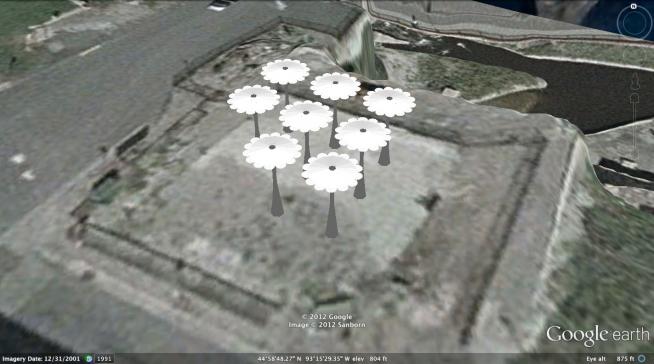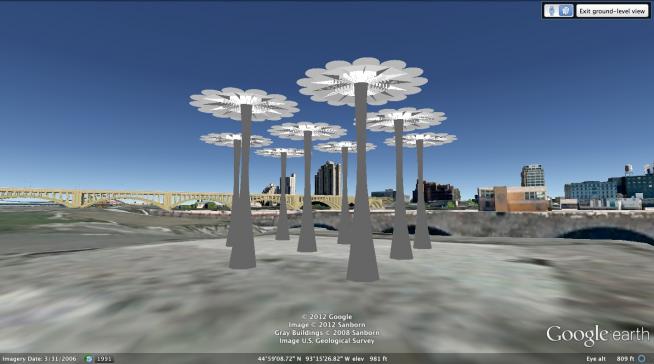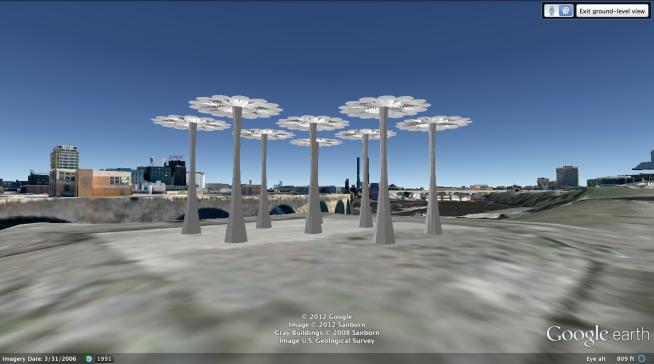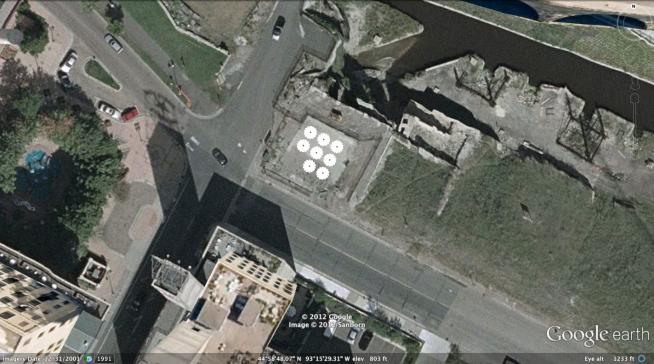
Wil Natzel, Night Blooms, artist rendering.



Night Blooms
For 2012, we commissioned Wil Natzel to create an architectural-scale installation at the northeast end of Portland Avenue near the Stone Arch Bridge from the humblest of materials: cardboard. Using a specialized CNC cardboard knife, he will make eight blooms ranging in height from 15 to more than 20 feet, assembled into a cluster. Each bloom has a round ten-foot diameter top that forms a permeable enclosure—an environment that can be explored throughout the night.
Natzel is interested in the history of architectural ornamentation, as well as its expression today using contemporary tools in unexpected ways with unusual materials. He has produced and assembled large architectural constructions of cut cardboard (giant domes with squids) at the Soap Factory in Minneapolis. Night Blooms is his first outdoor cardboard installation. This whimsical bouquet, reminiscent of sunflowers stretching toward the moonlight of nuit blanche, contrasts with the surrounding historic structures in the community. The ephemeral materials, like a memento mori, remind us of the passage of time and the resourcefulness necessary to survive and prosper.
Natzel comments on his work:
“With Night Blooms, I construct structures where pattern and decoration can thrive in architecture. I am creating a spatial graffiti as a purely decorative enhancement to the built environment.”
Wil Natzel
Wil Natzel lives and works in Owatonna, Minnesota. He graduated from the Cranbrook Academy of Art with a master’s degree in architecture after receiving an undergraduate degree in architecture from Iowa State University. Early in his career, he was an intern for Charlie Lazor, designing FlatPak bathrooms. Now his work circulates around the periphery of eclectic architecture, counteracting the banal.




